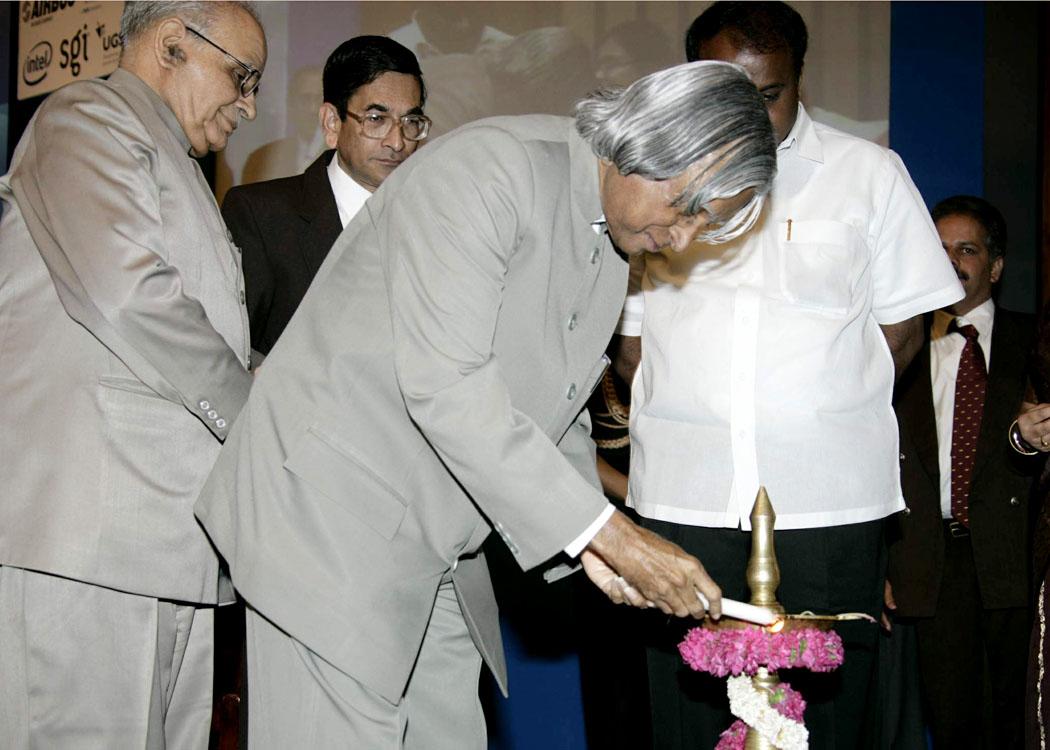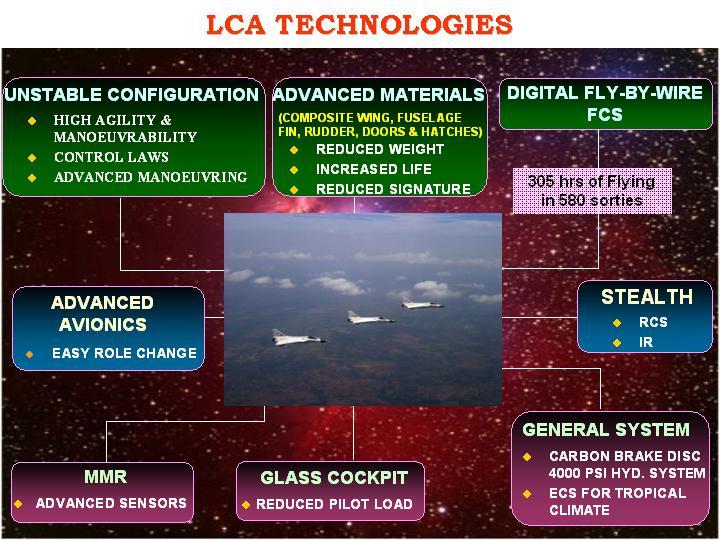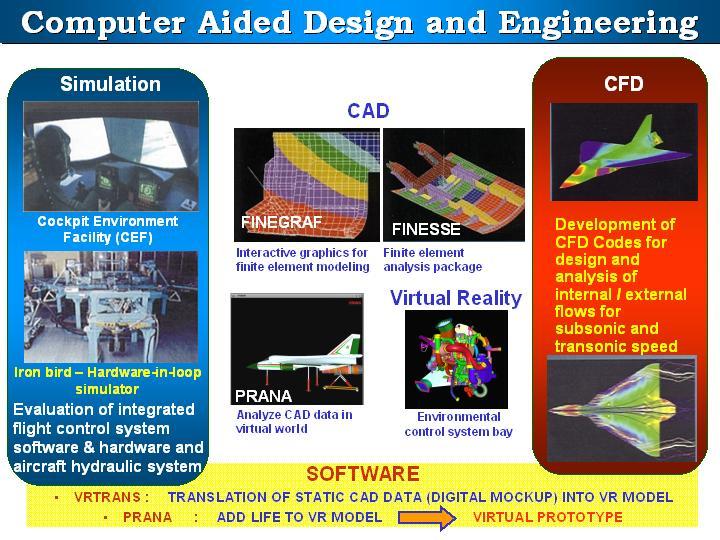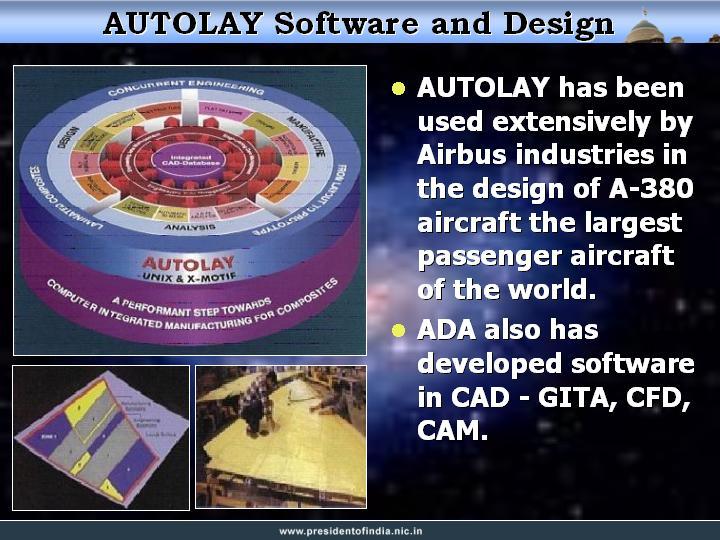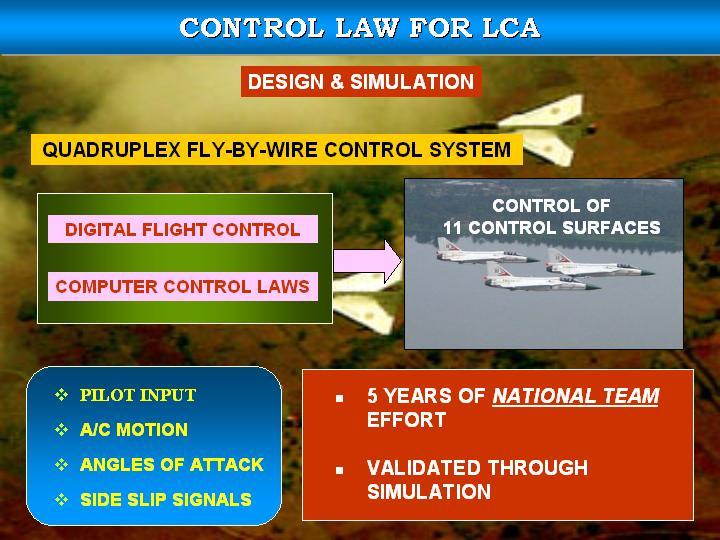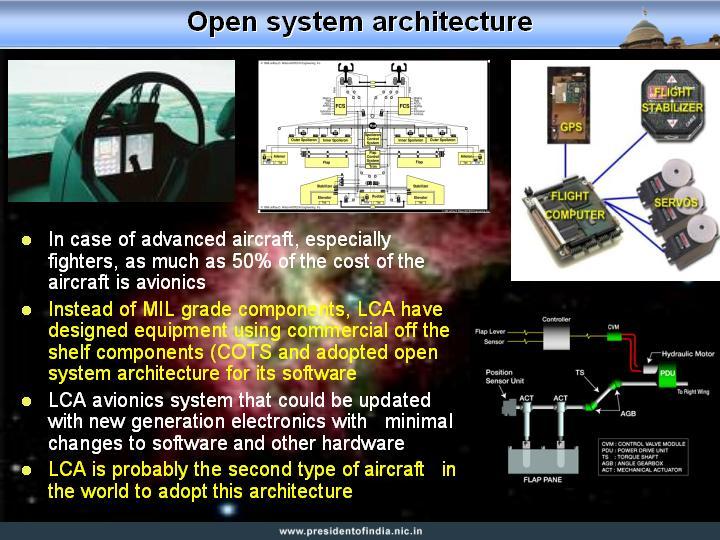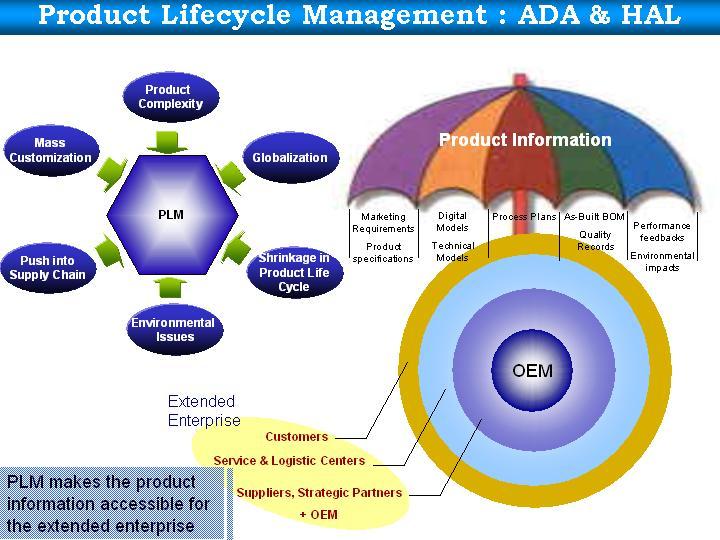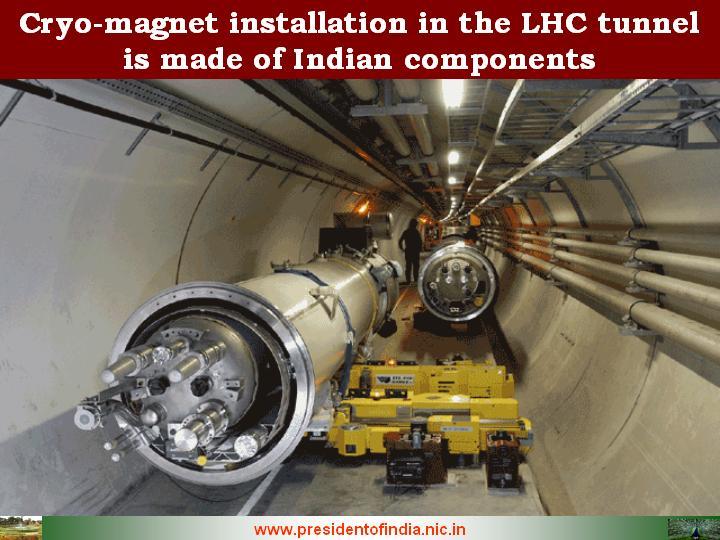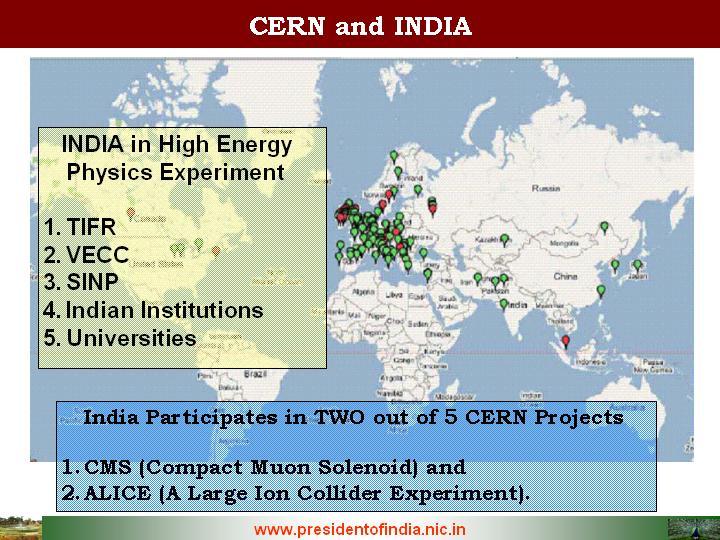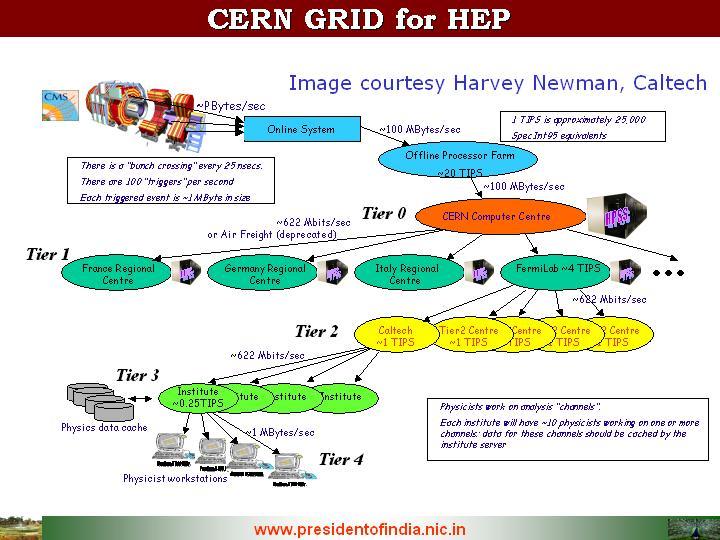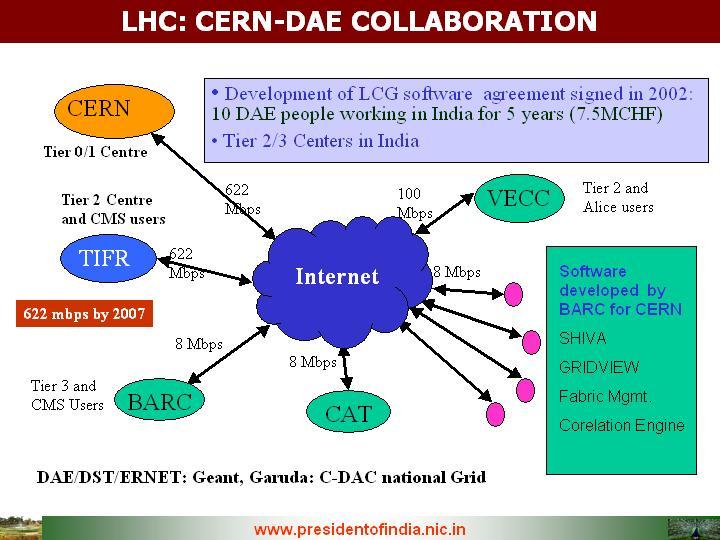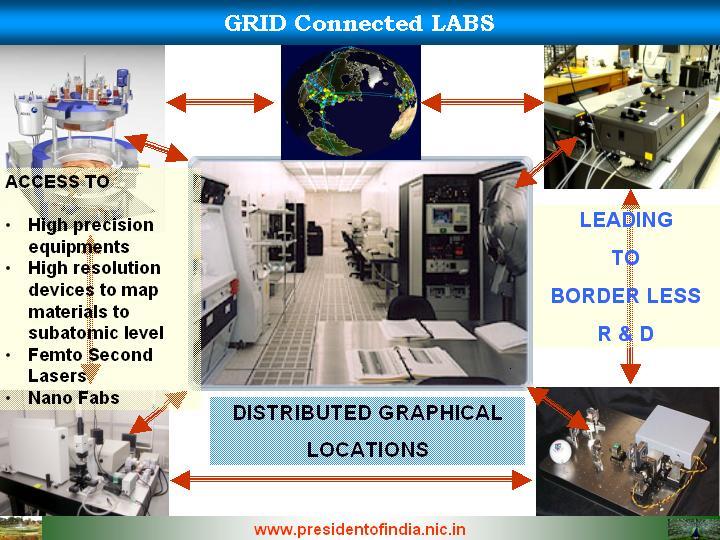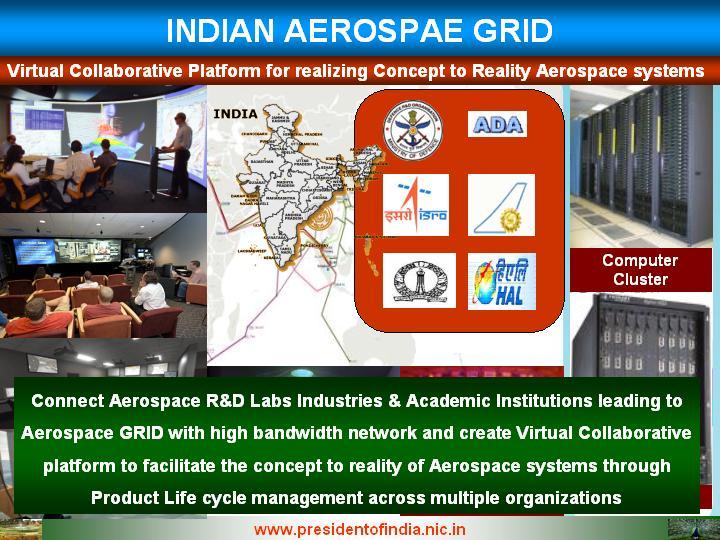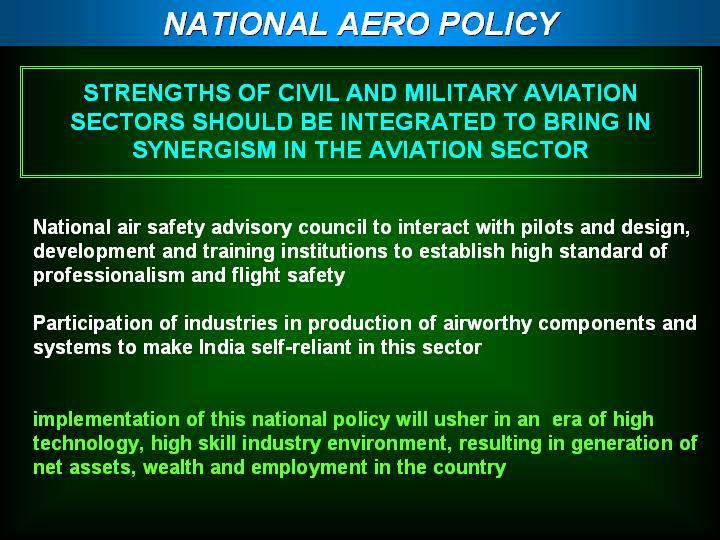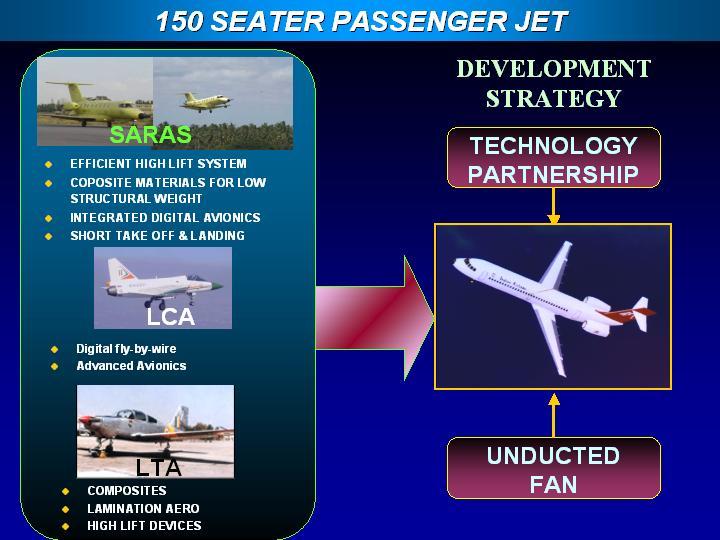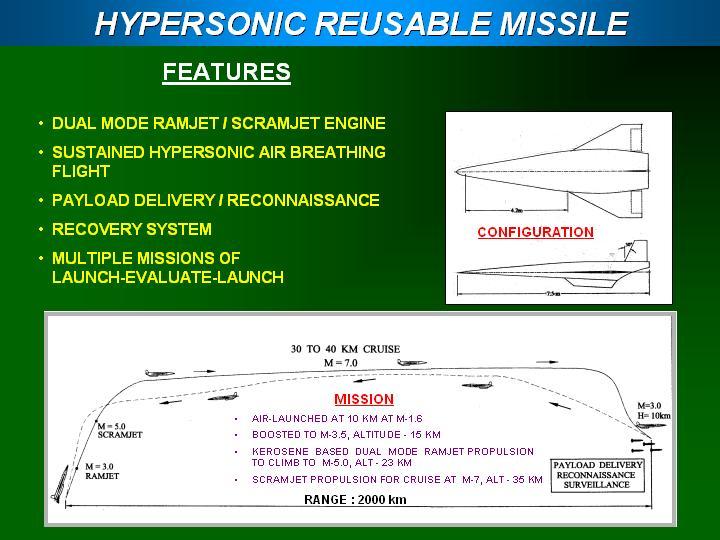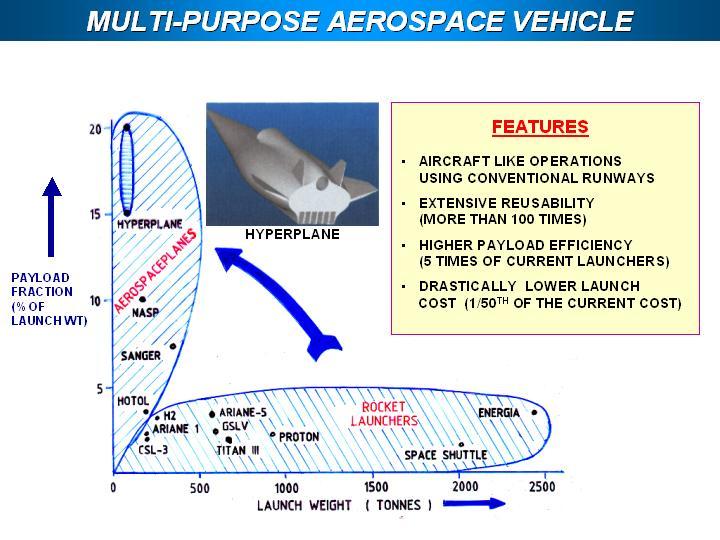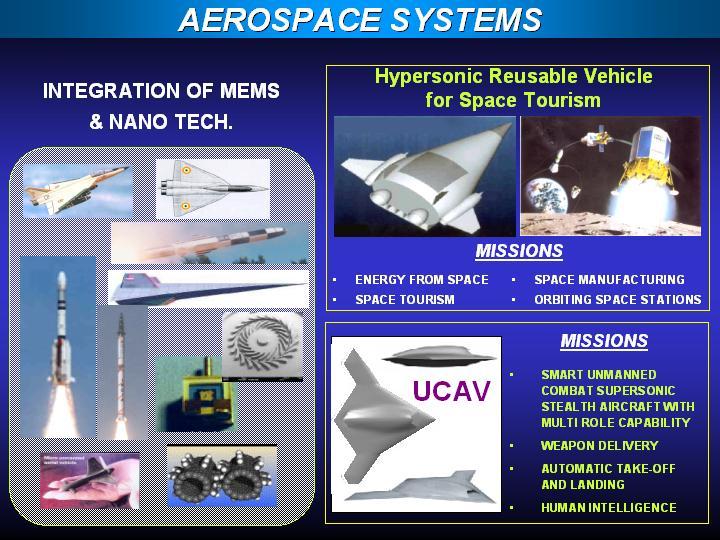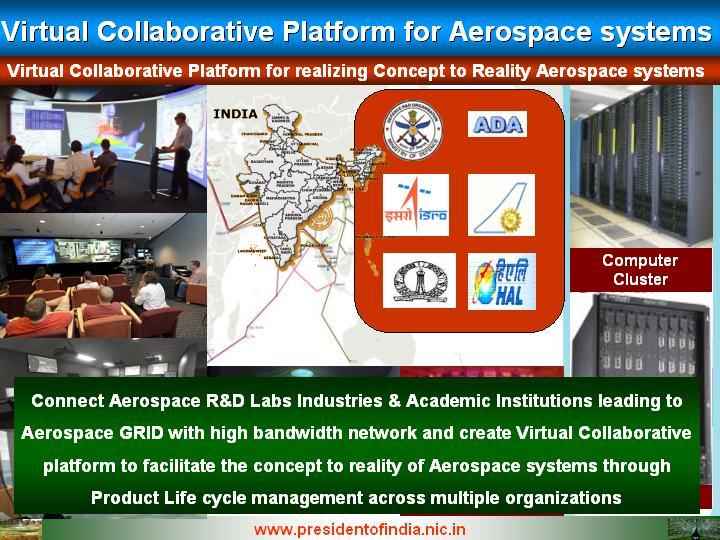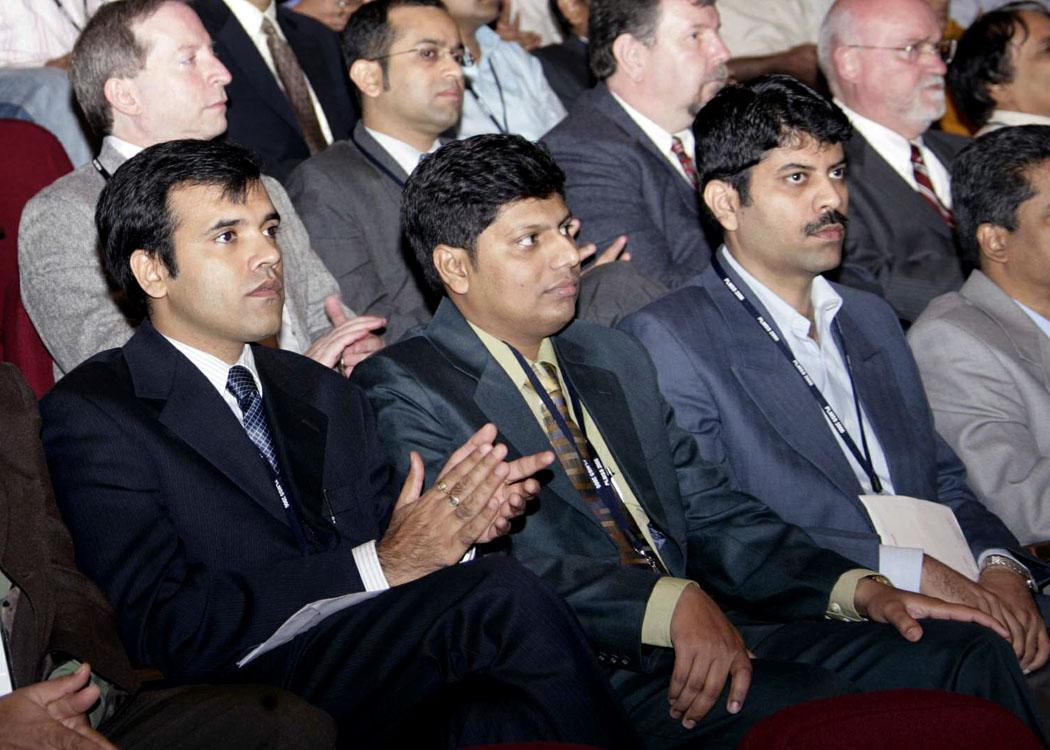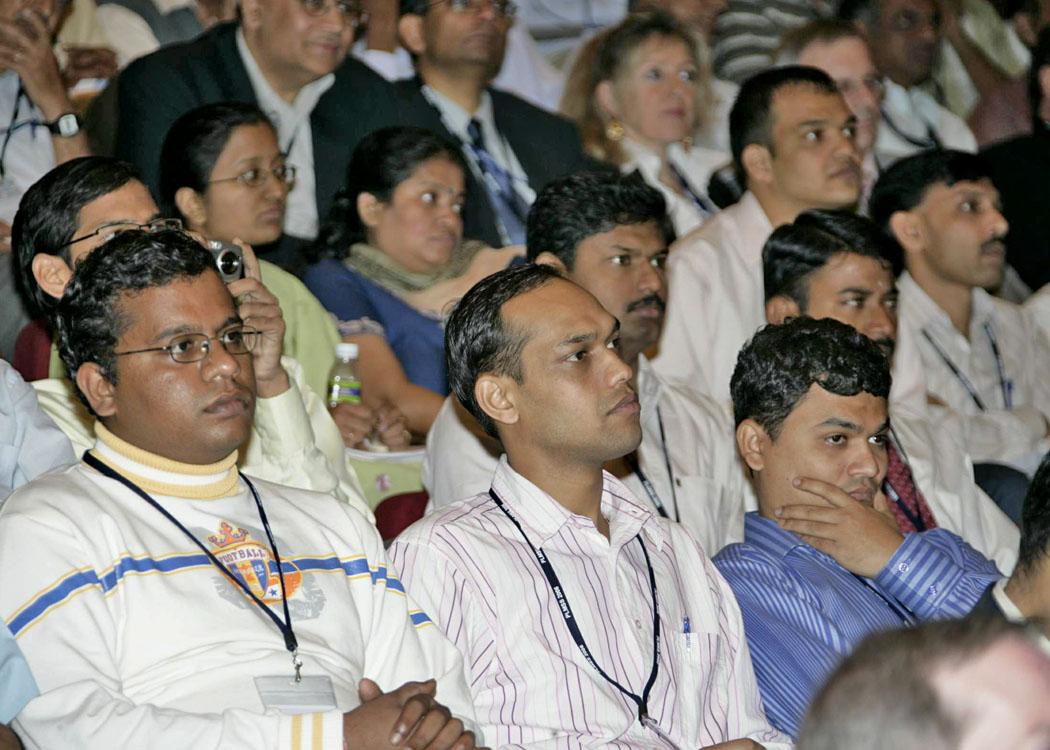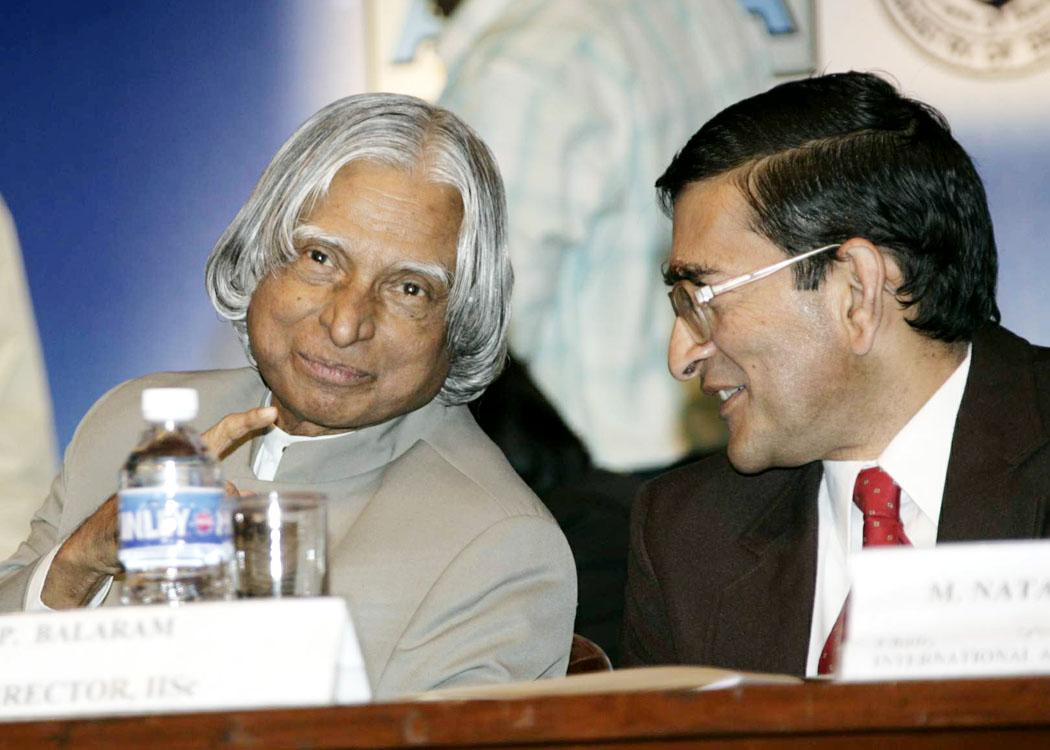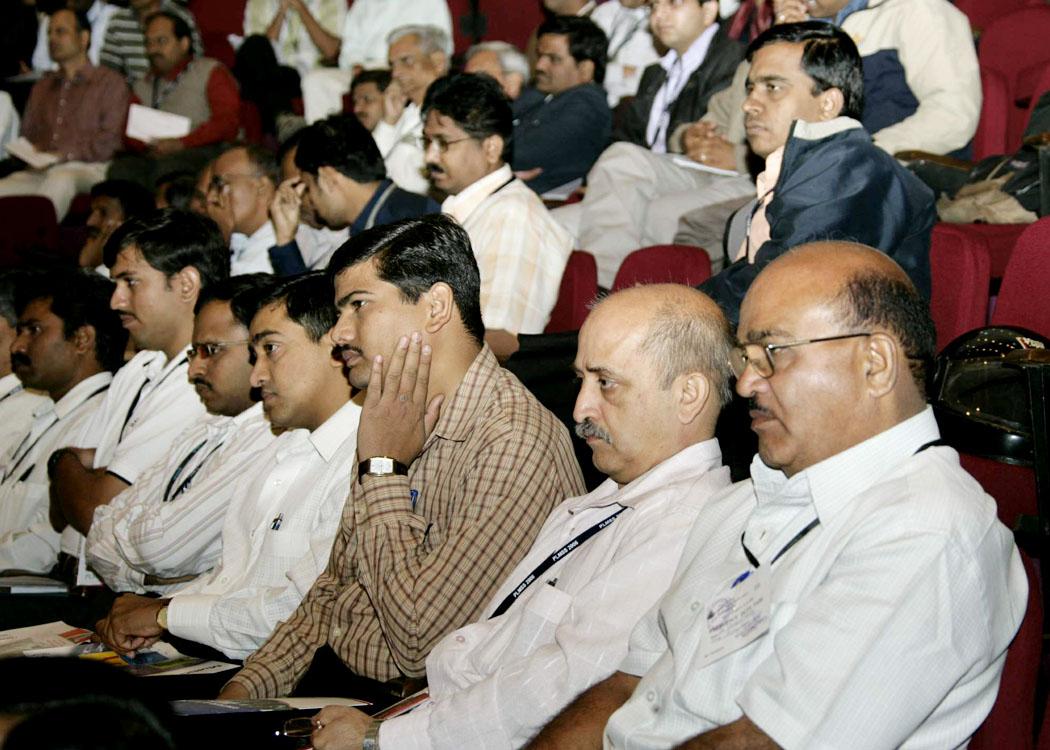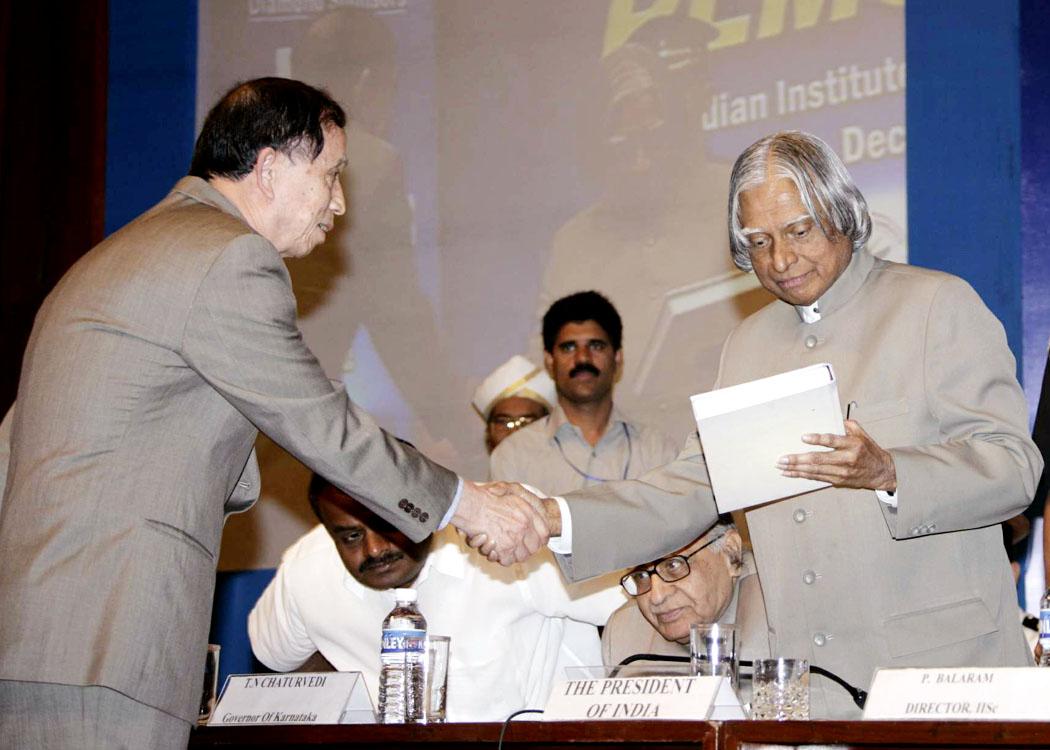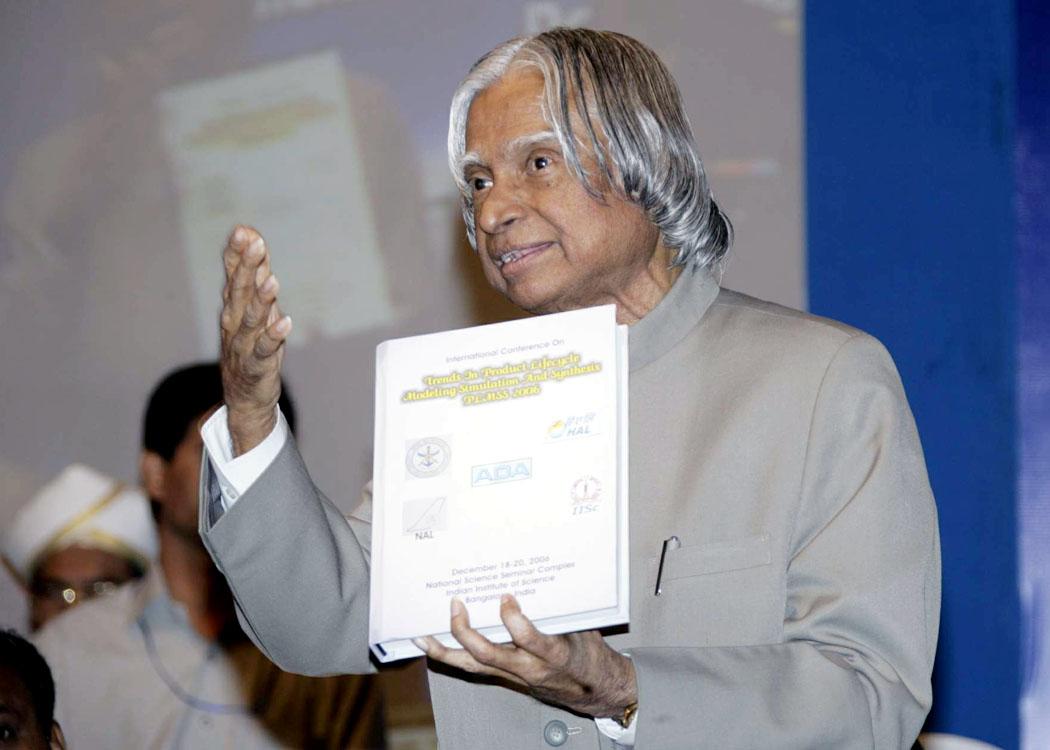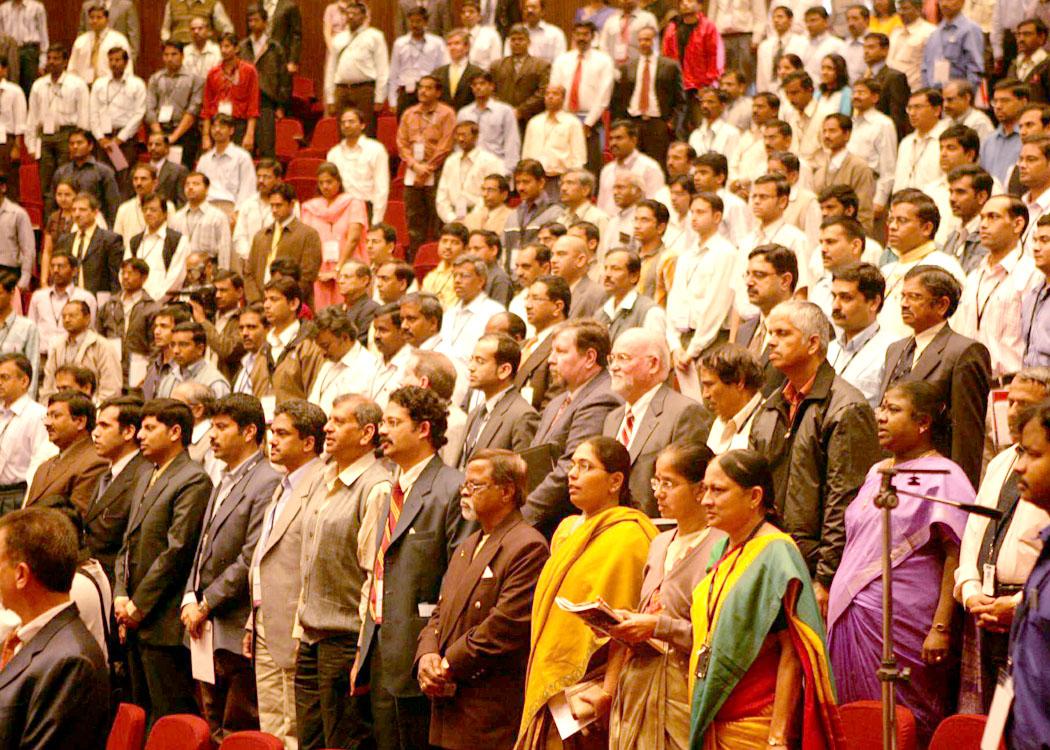Address at the Inauguration of the International Conference on Trends in Product Life Cycle, Modelling, Simulation & Synthesis (Plmss-2006),bangalore
Bangalore : 18-12-2006
Virtual Collaborative Platform for Aerospace Missions
"Convergence of technologies leads
to future aerospace systems"
I am indeed delighted to participate in the International Conference on "Trends in Product Life Cycle- Modelling, Simulation and Synthesis" organized by ADA jointly with Defence Research and Development Organization (DRDO), Hindustan Aeronautics Limited (HAL), National Aerospace Laboratories (NAL) and Indian Institute of Science (IISc) at Bangalore. I greet the organizers, eminent scientists, technologists, educationists, researchers, industrial partners, distinguished guests and other participants. I particularly greet the national and international participants for sharing their experiences and innovations in product design and development processes such as Product Definition, Product Visualization, Product Modeling and Simulation, Product Realization, Product Development Frame Work. In this gathering, I am thinking of what thoughts I can share with you. I would like to talk to you on the title "Virtual Collaborative Platform for Aerospace Missions". Complex products with state of art technology and their demonstration missions have to anticipate a number of uncertainties during design and development with underlying assumptions of service conditions. A visualization of the product and detailed parametric studies is an essential requirement to characterize the product and its mission.
LCA leads to development of Aerospace Technologies
For the aeronautical community, the real major milestone was the successful demonstration flight of the first prototype Light Combat Aircraft (LCA) designed and developed by ADA, as a multi-institutional effort was a major milestone. The programme demonstrated the Indian capabilities in many areas like aircraft design, advanced composites, fly-by-wire control system, safety systems, quality protocols and operational standards. . Multiple state-of-the-art technologies got developed during the process. Computational Fluid Dynamics (CFD) emerged as core strength for India with advanced software codes and super computing capability to optimize configurations for guided missiles, LCA and launch vehicles with the leadership emanating from IISc, DRDL and ADA. CAD/CAM has become a critical tool in Aerospace systems design and manufacturing. In addition, ADA has established unique software capability for virtual reality, which reduces the design and product realization time by 40%. ADA has always been pioneer in use of the state-of-art technologies like CAD/CAM/CAE, Digital Mock Up and Virtual Reality.
Computer Aided Design and Engineering: In today's world, Computer Aided Design and Engineering are the backbone of any new product development. Even product improvement needs number of Computer Aided tool set. In the last one and half decades, significant developments have taken place in the computer aided design and engineering tools that have revolutionized development and realization of products as complex as an aircraft.
The Light Combat Aircraft Programme pioneered application and even development of Computer aided design and engineering tools. These tools and techniques have helped in realizing an optimum design and enabled manufacture and assembly of complex components both metallic and composites. Computer aided engineering tools that were developed as part of LCA project, the prominent one was "Virtual Reality Laboratory and the software tools such as PRANA". In this technology, 3-D models of all the components are developed using CAD tools, the models are assembled using VR tools. Using VR tools, the assembly and integration procedures are checked, assembly jigs and fixtures are defined. Also the step-by-step procedure for accessibility and maintainability are also tested and optimized. Where design and manufacturing teams cannot visualize, in VR Lab the teams can touch and trace the hydraulic and electrical circuits and make well ahead required design and manufacturing.
Using VR tools, digital prototypes of LCA were made on workstations and powerful mainframe computers. Assembly and maintenance aspects were studied on these computer models. Using VR and computational fluid dynamic codes (CFD), flow visualization was done, kinematics of sub-systems such as landing gear were studied both in static and dynamic conditions simulating fluid flow and aerodynamic loads. Using gloves and visual devices, accessibility and maintenance aspects were studied and were demonstrated to the customer much before the aircraft was ready.
Autolay Software and Design: Another important contribution of LCA programme was development of computer aided design, analysis and manufacturing of advanced composite parts. The "AUTOLAY" software developed by ADA is the first software available, which can be applied commencing from conceptual design, detailed design analysis, manufacturing and quality control. This software has been used extensively by Airbus industries in the design of A-380 aircraft the largest passenger aircraft of the world. "AUTOLAY" has also been bought by Companies such as Boeing, Antonov Design Bureau, submarine and racing car industry. During the period 1987-2000, LCA programme transformed itself into an exporter of software for composite parts from a CAD software importer.
The other software developed by LCA programme in collaboration with R & D laboratories and academic institutions are:
(1) Computational Fluid Dynamics (CFD): with these tools it is possible to analyze the flow not only Subsonic Mach numbers but also Supersonic Mach numbers.
(2) Computer Aided Manufacturing (CAM) - 5 axis NC programming, sheet metal forming, composite parts lay up, computer aided process planning.
(3) Computational electro magnetics - enabled estimation of radar cross section of full aircraft and a host of other problems such as electro magnetic interference, optimal location of antennas etc.
ADA should take necessary steps in converting these software into marketable products to the Aerospace industries like Autolay.
Modeling and Simulation:
In the development of a manned aircraft, a six degree of freedom simulator is established with high fidelity aircraft mathematical models and visuals. The experimental test pilots fly this simulator extensively and optimize their flying techniques. Optimizing the handling qualities that enabled agile but safe flying is one of the key functions of a simulator. A high fidelity simulator of LCA was developed at Aeronautical Development Establishment (ADE) and this was flown by the pilot who did the first flight of LCA very extensively. Wg. Cdr. Kautiyal was the pilot who flew LCA for the first time on 4th January 2001. After he landed, I asked him how he felt flying the LCA, first time. Wg. Cdr.Kautiyal said that he felt as if he was flying the simulator. This shows that our design team along with pilots developed a simulator, which reproduced the handling qualities of actual aircraft. This is a note worthy accomplishment of our development team from ADA and DRDO laboratories.
Open system architecture: software driven need: In case of advanced aircraft, especially fighters, as much as 50% of the cost of the aircraft is avionics. The vehicle management system, flight control systems, weapon management systems are centered on avionics. The rate of development in electronics is so fast that obsolescence occurs very soon. While a fighter aircraft is used for 25-30 years, electronics become obsolescent in 3 to 5 years. This results in costly modification to the present generation aircraft to update the electronics and the related software. In the aircraft that are being operated by Air Force all over the world, Military grade electronic components are used. These components are order of magnitude costlier and only a few manufacturers produce these components. To overcome the twin problems of high cost and high obsolescence, the LCA design team adopted a new design philosophy. Instead of MIL grade components, they have designed equipment using commercial off the shelf components (COTS). They have also adopted open system architecture for its software. The result is our avionics system that could be updated with new generation electronics with minimal changes to software and other hardware. This philosophy keeps the aircraft up-to-date for decades without any fear of obsolescence and non-availability of components. The cost is also reduced substantially. I understand LCA is probably the second type of aircraft in the world to adopt this architecture. Now I would like to discuss the innovative use of computers in the development of reentry vehicle design.
Product Lifecycle Management: ADA and HAL have automated the design to manufacturing life cycle process with the extensive usage of digital documentation and processing using the Product. The Product Lifecycle Management (PLM) solution has been chosen as a strategic approach by ADA to create and manage LCA product data from its initial stage of conception till its retirement. The PLM solution brought a new kind of challenge and thinking at ADA. LCA had multiple design and manufacturing centers. With the growing number of prototypes, PLM framework has streamlined the process. PLM tools which enabled further improvement of quality and reduction in assembly time. Also, its framework forced people to shun the culture of ad hoc working and processes are streamlined. Above all the interface design and product design and integration procedures were in a position to evolve through the PLM system at the right time.
MDO: During my working with Dr. Kota Harinarayana, I understand about a new design tool that is now emerging is MDO (Multi Disciplinary Optimization). This enables taking the impact of multiple disciplines in the design of complex products and arriving at the optimum product design. Indian organizations must master this technology so that they could develop cost effective world class products. This technology will lead to cost effective and competitive aerospace products.
The important capabilities discussed so far will lead the Indian Aerospace industry into levels of maturity of capability that are needed for competitive aircraft system production. In the composite technology, the Carbon-Carbon heat shield nose tip of Agni and high temperature Radomes and large composite wing of LCA show the strength of the country in the composite products. The Digital Fly-by-Wire control system and the control laws developed for LCA with the formation of national team, made the aircraft state-of-the-art. LCA has been successfully flight-tested and is going to production phase. It is time HAL and ADA have to aggressively market the LCA aircraft. With the above technologies and the engine development in progress, the next generation medium combat aircraft is bound to take shape. With this technological background and the core competence in aerospace technologies achieved by our institutions, I am visualizing a "Virtual Collaborative Platform for Aerospace" for enabling the design to reality - Product life cycle management framework that will enable India to realize its Indian Aerospace vision and become competitive in the defence and the commercial market of aerospace.
Aerospace GRID
When I visited CERN, Switzerland with my team, I witnessed construction of largest accelerator; Large Hydron Collider (LHC) in the world to study the collision of particles while simulating the big bang theory and to study and find out is there any deviation from the standard theory. It is an international project the collaborations range from one continent to another , India is also participating. In these large experiments, apart from path breaking developments in the areas of detector technology, electronics, instrumentation etc. there is one area where present technology reaches a road block, that is handling of Terabytes amount of data & hundreds of Teraflops of computing power.
The need of working with the data at very high speed and by large number of people makes the issue even more problematic. Getting this huge amount of computation need at one place is just impossible notwithstanding, tremendous progress made in Computing & Communication technology. The unique facility emerged in this laboratory is a GRID computing facility. CERN has established the GRID with 622 mbps network between the participating nations using their computing through Internet in 4 tiers. It is a technology where one needs to deal with the problem of connecting heterogeneous systems & connecting them at high speed so that they break the barrier of distance, and most importantly dealing with all-important security in the present connected world. In India DAE and TIFR is building the GRID computing facility. This GRID computing system is indeed a very important facility beyond parallel processing. All the aerospace institutions have to be connected in the GRID form, not only within the country, even the aerospace partner countries have to be connected. The initiative has to be taken jointly by Aerospace community in the country as a mission.
The Aerospace GRID which connects the ADA, HAL, NAL, DRDO Laboratories in a high bandwidth network along with the hundreds of work centers which will become the foundation for the establishing the Virtual Collaborative design centre or platform with full fledged concept to reality product life cycle management environment for the development of any type of aircrafts or any type fighters and any type of helicopters in a much faster throughput with quality in a cost effective manner. My friends, is not just an interconnection of computers but also an integration of everything that we do in science and technology including the networking of the scientists and the scientific minds, which will lead to establish a Virtual Collaborative environment for conceptual design to reality leading to realization of marketable Aerospace systems.
So far what we have discussed on the aerospace technologies including the Virtual Reality software and PLM with the addition of Aerospace GRID, India will be in a position to have Aerospace vision.
National Aerospace Policy - Need of the hour
Space systems, missile and aeronautics groups have demonstrated technology excellence in their products through networking with academic institutes, industries and government. There are more than three hundred thousand engineers and technicians with infrastructure of more than Rs.20,000 Cr. There is strong mission management culture and committed partnership. With this national strength and opportunity for larger demand in aerospace systems and export potential, a large business for industries is in front of us. It is essential that this strength is integrated into a National Aeronautics Policy for integrating the strengths of both civil and military aviation sectors to bring synergy in the aviation sector. Implementation of this policy will usher in era of high technology and high skill industry environment resulting generation of assets, wealth and employment in the country. Chairman ISRO informed me that the formulation of National Aerospace Policy is in an Advance stage of approval. I will also try to accelerate it further.
Conclusion
With the experience of many complex missions establishing tremendous disciplinary skills, technology and infrastructure, collaborative framework and human resource expertise, time has come for India to take up the following missions. Technologies in the field of aeronautics, space and missile are converging. This convergence will lead to a cost effective high quality design, development and production of the various types of aerospace systems such as:
(a) 150 seater passenger jet
(b) Supersonic unmanned combat aircraft
(c) Hypersonic reusable missile
(d) Hyperplane
(e) Planetary missions including manned missions for energy and water.
With vast infrastructure and human resource in the aerospace sector India definitely can launch such missions with international partnership. This would require a virtual collaborative platform not only among the functional disciplines but also among the participating institutions in the country and abroad. As I discussed earlier, we should embark on a mission of creating a "Virtual Collaborative Platform for Aerospace systems" with the active participation of ADA, DRDO, ISRO, HAL, NAL in collaboration with other scientific laboratories and work centers, private institutions, and academic institutions like IISc, IITs and other universities in the country to realize the Aerospace Vision of India.
With these words, I am happy to inaugurate the International Conference on "Trends in Product Life Cycle- Modelling, Simulation and Synthesis" organized by ADA. My best wishes to all the participants for success in their mission.
May God bless you all.


